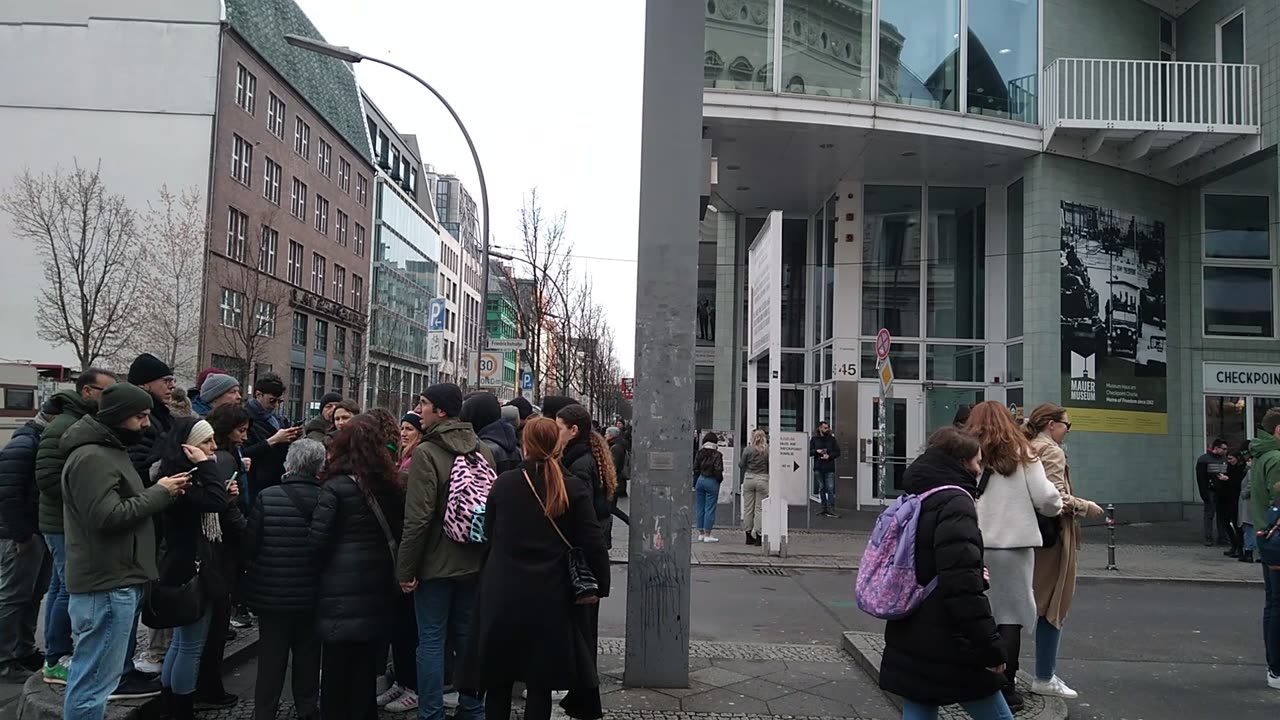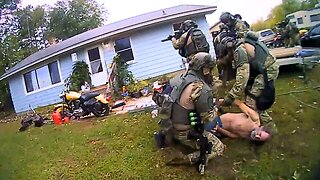Premium Only Content

Checkpoint Charlie(Berlin Wall Crossing Between East and West Berlin)
Checkpoint Charlie (or "Checkpoint C") was the Western Bloc's name for the best-known Berlin Wall crossing point between East Berlin and West Berlin during the Cold War (1947–1991),[1] becoming a symbol of the Cold War, representing the separation of East and West.
East German leader Walter Ulbricht agitated and maneuvered to get the Soviet Union's permission to construct the Berlin Wall in 1961 to prevent brain drain, emigration and defection from East Berlin and the wider German Democratic Republic into West Berlin.[2]
Soviet and American tanks briefly faced each other at the location during the Berlin Crisis of 1961. On 26 June 1963, U.S. President John F. Kennedy visited Checkpoint Charlie and looked from a platform onto the Berlin Wall and into East Berlin, the same day he gave his famous Ich bin ein Berliner speech.[3]
After the dissolution of the Eastern Bloc and the reunification of Germany, the American guard house at Checkpoint Charlie became a tourist attraction. It is now located in the Allied Museum in the Dahlem neighborhood of Berlin.
Background
Sign at Checkpoint Charlie on the way into West Berlin, as it appeared in 1981
Emigration restrictions, the Inner German border and Berlin
Further information: Eastern Bloc emigration and defection and Inner German border
Between 1949 and 1961, over 2½ million East Germans fled to the West.[4] The numbers increased during the three years before the Berlin Wall was erected,[4] with 144,000 in 1959, 199,000 in 1960 and 207,000 in the first seven months of 1961 alone.[4][5] The 3.5 million East Germans who had left by 1961 totaled approximately 20% of the entire East German population.[6]
The emigrants tended to be young and well educated,[7] including many professionals — engineers, technicians, physicians, teachers, lawyers and skilled workers.[6]The brain drain became damaging to the political credibility and economic viability of East Germany. [8]
By the early 1950s, the Soviet method of restricting emigration was emulated by most of the rest of the Eastern Bloc, including East Germany.[9] However, in occupied Germany, until 1952, the lines between East Germany and the western occupied zones remained easily crossed in most places.[10] Subsequently, the inner German border between the two German states was closed and a barbed-wire fence erected.
Even after closing of the inner German border officially in 1952,[11] the city sector border in between East Berlin and West Berlin remained considerably more accessible than the rest of the border because it was administered by all four occupying powers,[10] so Berlin became the main route by which East Germans left for the West
-
 LIVE
LIVE
Lofi Girl
2 years agoSynthwave Radio 🌌 - beats to chill/game to
291 watching -
 2:07:47
2:07:47
LFA TV
16 hours agoTHE RUMBLE RUNDOWN LIVE @9AM EST
74.8K8 -
 2:20:46
2:20:46
I_Came_With_Fire_Podcast
11 hours agoThe Pattern Beneath the World: Nature, The Mark of the Beast, & the Sacred Order
23.8K22 -
![Mr & Mrs X - [DS] Antifa Are Planning An Insurrection,Trump Has Prepared The Counterinsurgency-EP 11](https://1a-1791.com/video/fwe2/6b/s8/1/k/3/R/p/k3Rpz.0kob-small-Mr-and-Mrs-X-DS-Antifa-Are-.jpg) 49:56
49:56
X22 Report
6 hours agoMr & Mrs X - [DS] Antifa Are Planning An Insurrection,Trump Has Prepared The Counterinsurgency-EP 11
64.9K55 -
 1:08:57
1:08:57
Wendy Bell Radio
10 hours agoPet Talk With The Pet Doc
57.4K27 -
 8:47
8:47
Demons Row
2 days ago $1.85 earnedI Spent $50,000 Building My Dream Harley-Davidson 😳💀 (Learn From My Mistakes)
48K10 -
 38:18
38:18
SouthernbelleReacts
1 day ago $2.13 earnedThey Thought the Secret Was Buried… But I’m Screaming! | Reaction to I Know What You Did Last Summer
35.1K2 -
 29:37
29:37
Midwest Crime
1 day ago5 Cops Shot as Minnesota Raid Turns into Chaos
61.9K169 -
 31:08
31:08
mizery
17 days ago $0.62 earnedI Asked 100 Pros To Help Me Go Pro...
17.1K3 -
 7:03:56
7:03:56
FyrBorne
18 hours ago🔴Battlefield 6 Live M&K Gameplay: A Return to Form for This Former Giant
24.6K